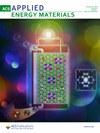A coherent microscopic picture for the exotic structure of 11Be
IF 5.4
3区 材料科学
Q2 CHEMISTRY, PHYSICAL
引用次数: 0
Abstract
The neutron-rich nucleus 11Be is one of the most enigmatic exotic nuclei in the periodic table. It exhibits a multitude of unique and intriguing phenomena within a single nucleus, including the halo phenomenon, clustering structure, and parity inversion. A unified description of these exotic properties represents a significant challenge for the nuclear physics field. By employing the axially deformed relativistic Hartree-Fock-Bogoliubov (D-RHFB) model, we have successfully reproduced the parity inversion and the one-neutron halo in 11Be, and revealed the underlying cluster structure. It is found that the intrusion of the sd-shell, which results in the parity inversion, is coherently connected with the halo and cluster structures. In particular, the s-wave is responsible for the halo formation, and the mixing of - and -waves enhances the cluster structure. This work elucidates the coherence between the parity inversion and the halo/cluster structures of 11Be, and addresses the long-standing challenge of providing a unified explanation for the multiple exotic phenomena observed in 11Be.
11Be奇异结构的连贯微观图景
富中子核 11Be 是元素周期表中最神秘的奇异原子核之一。它在单个原子核内表现出多种独特而有趣的现象,包括晕现象、簇结构和奇偶反转。统一描述这些奇异特性是核物理领域面临的一项重大挑战。通过采用轴向变形相对论哈特里-福克-波哥留布夫(D-RHFB)模型,我们成功地再现了 11Be 中的奇偶反转和一中子晕,并揭示了其潜在的团簇结构。研究发现,导致奇偶性反转的 sd-壳的侵入与晕和簇结构是连贯的。特别是,s波是晕的形成原因,而2s1/2-波和1d5/2-波的混合增强了星团结构。这项工作阐明了 11Be 的奇偶性反转与光环/星团结构之间的一致性,并解决了为 11Be 中观测到的多种奇异现象提供统一解释这一长期挑战。
本文章由计算机程序翻译,如有差异,请以英文原文为准。
求助全文
约1分钟内获得全文
求助全文
来源期刊

ACS Applied Energy Materials
Materials Science-Materials Chemistry
CiteScore
10.30
自引率
6.20%
发文量
1368
期刊介绍:
ACS Applied Energy Materials is an interdisciplinary journal publishing original research covering all aspects of materials, engineering, chemistry, physics and biology relevant to energy conversion and storage. The journal is devoted to reports of new and original experimental and theoretical research of an applied nature that integrate knowledge in the areas of materials, engineering, physics, bioscience, and chemistry into important energy applications.
 求助内容:
求助内容: 应助结果提醒方式:
应助结果提醒方式:


